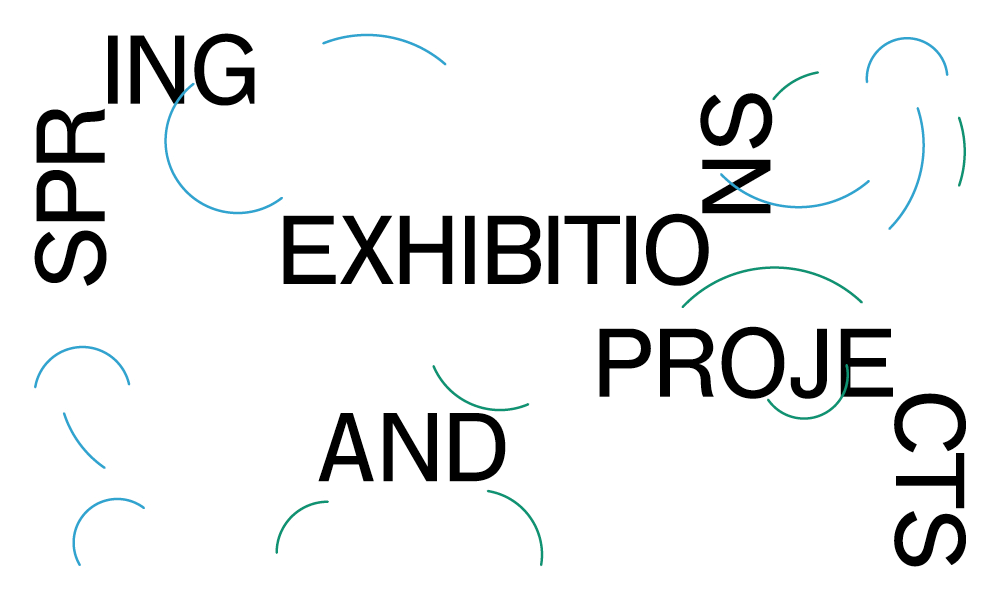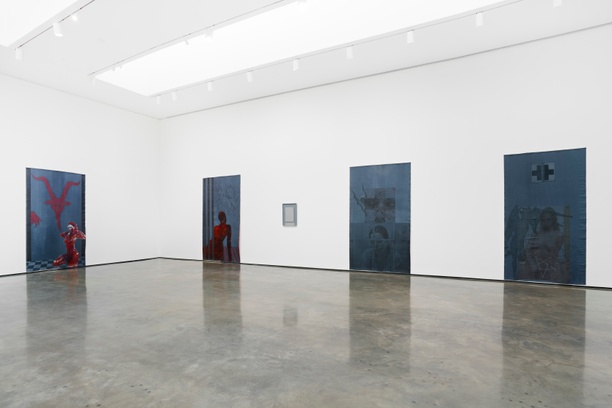
2018 Spring Exhibitions And Projects
April 8 – May 27, 2018
→ CCS Bard Galleries, Hessel Museum of Art
Exhibition Category
Collected exhibitions
The Center for Curatorial Studies presents exhibitions and projects curated by the second-year students in its graduate program in curatorial studies and contemporary art. The students have organized these exhibitions as part of the requirements for the master of arts degree.
Student-curated exhibitions at CCS Bard are made possible with support from the Rebecca and Martin Eisenberg Student Exhibition Fund; the Mitzi and Warren Eisenberg Family Foundation; the Audrey and Sydney Irmas Charitable Foundation; the Robert Mapplethorpe Foundation; the Board of Governors of the Center for Curatorial Studies; the CCS Bard Arts Council; and by the Center’s Patrons, Supporters, and Friends.
Included exhibitions
Born Losers
Curated by Laura Brown

Darja Bajagić deals in the status of laden images, and one’s familiarity with and bodily responses to looking at them. Born Losers is Bajagić’s first US solo institutional exhibition, presenting a new series of work alongside earlier monochrome studies.
Her split body is a crack in our community (Bard)
Curated by Lorel Easterbrooks

Her split body is a crack in our community (Bard) is a collaborative exhibition by the artist duo Amy Lien & Enzo Camacho. Departing from their 2016 exhibition, Manananggal has appeared in Berlin, the present exhibition will question the interrelation between geo-cultural mobility and art’s languages of critique.
Not Quite Verbatim
Curated by Max Fields

Not Quite Verbatim brings together artists who use interviews and related forms of recorded conversation as a medium, motif, site, and apparatus to examine the slippery relationships between utterance, context and subjective interpretation. Through reflection on varied forms of recorded conversation, these artists expose the embedded tropes and conventions that reinforce underlying conditions of performance, socio-historical omission, and authorial limitation.
the skin of the sound
Curated by Talia Heiman

the skin of the sound is an exhibition that considers the intimate relations and physical boundaries between sounds and bodies. Presenting text-based video and sculpture, the included works negotiate the social conditions through which sound is produced, exchanged, and absorbed.
So long ago it feels like a memory of someone else
Curated by Andrew Hibbard

So long ago it feels like a memory of someone else is an exhibition that engages the intimacies inflected and eluded by artworks.
An Unbound Knot in the Wind
Curated by Alison Karasyk

An unbound knot in the wind takes as its starting point the Finnmark Witchcraft Trials of the 17th century and the Steilneset Memorial (2011) in Vardø, Norway, which commemorates the victims. The exhibition brings together artworks that position themselves in dialogue with this history through considerations of gendered and ecological power structures, and questions of memory and materiality.
To clear the ground of weeds
Curated by Sabrina Maltese

To clear the ground of weeds is a group exhibition that considers the political dimensions of uprootedness by exploring the circulation of seeds and flora specimens, the entanglements of indigenous and introduced plant species, and the ways in which vegetation has been used to claim space.
Measures of Authority
Curated by Selby Nimrod

Measures of Authority brings together photographs and documents from the archive of the writer and dominatrix Terence Sellers with artworks by Chris Kraus and Leigh Ledare. In their respective artistic and literary practices, these three artists address situations in which the exchange of power is eroticized. Their complications of the divisions between lived experience and artwork result in moments of slippage that become a material of the works themselves.
Everything is going to be fine
Curated by Thomas Patier

Everything is going to be fine addresses the personification of the technological object as it participates in a transfer of emotion, feeling or sensation.
L'impudeur
Curated by Janique Préjet Vigier

Structured on the eddy of modesty and immodesty, the exhibition stages the erotics and abjection of lived experience as the personal intersects with social and political forces.
I have become direction
Curated by Santiago Silva Daza

I have become direction reflects on an artist’s evacuation of authorship, and its implications on a curatorial methodology. Drawing artist’s books and archival material together with a rare work in video, the exhibition maps the indeterminate and the potential as sources of the work’s ongoing significance.
In and Out of Place
Curated by Hannah Spears

In and Out of Place considers subjectivity as it is formed through a mutual exchange between bodies and their environments. Traces of bodily encounters with built structures are indications of a conflict or tension between subjects and the power schemas that shape their respective environments.
Fashion Work, Fashion Workers
Curated by Jeppe Ugelvig

Fashion Work, Fashion Workers explores the relationship between art and fashion through the lens of labor. Featuring a series of projects from the 1990s to the present, the exhibition speculates what it means for artists to work in fashion in the ever-changing cultural landscape of consumer society.
More than mere jelly
Curated by Amelia Wallin

Situated within the working relations between artists, institutions, and curators, More than mere jelly is a group exhibition that marks the points of contact and moments of exchange which, like the invisible labor of care, precede and exceed documentation and remuneration.
Counting the Waves
Curated by Ruiyu Xu

Counting the Waves attempts to map the overwhelming aspects of reality: that which appears as the inconsumable and inaccessible “sublime.” Through an investigation of digital prostheses, the exhibition provides political and historical grounding for the quantum-physical, metaphysical, cinematic and digital fashioning and re-fashioning of temporality.